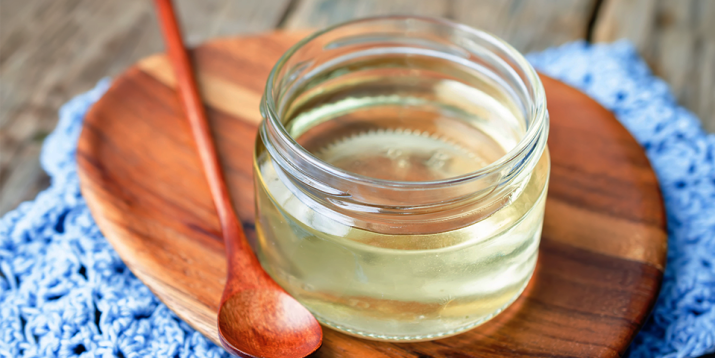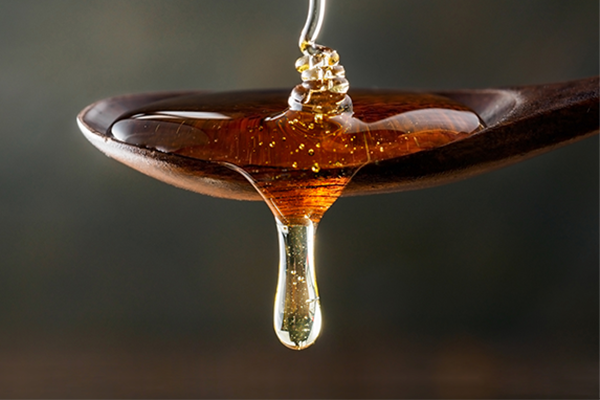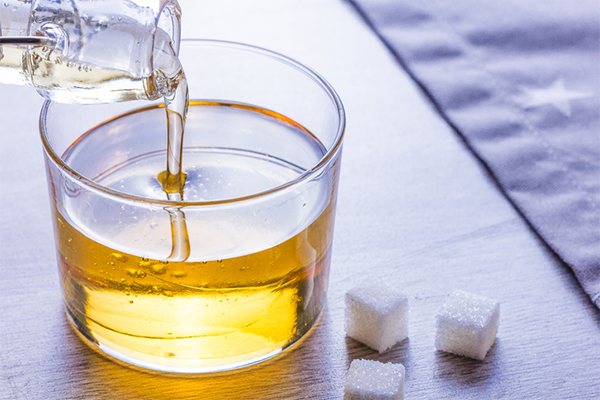What Is Invert Sugar?

With 70+ names, sugar is truly the master of disguise. While most of us know to look for common names like sucrose and glucose on food labels, there are so many lesser-known types of sugar, like invert sugar.
Ever hear of it? If not, you’re not alone. Invert sugar is commonly found in sodas, ice cream, and baked goods. Basically, it’s liquid sugar. But there’s more to the story than that.
What Is Invert Sugar?

Basically, invert sugar is sugar in viscous liquid form. Honey is also considered a natural source of invert sugar.
Food manufacturers favor this liquid sugar “because it adds more sweetness, results in a softer and smoother product texture, dissolves more easily, and is also more resistant to microbial spoilage,” explains Marisol Ortiz, MS, RDN. It also helps foods like shelf-stable baked goods retain moisture.
“Invert sugar is not much different from table sugar or other added sugars,” says Ortiz. “Nutritionally it is the same. What makes it different is its composition.”
You’ll find invert sugar in products like:
- Soda
- Flavored coffee or tea drinks
- Baked goods
- Pastries
- Flavored dairy products (ice cream, yogurt, etc.)
- Sorbet
- Jellies and jams
Is Invert Sugar Bad for You?
Sugar is sugar, so consuming invert sugar in moderation is key. Invert sugar falls into the “added sugar” category. That quite literally means sugar was added to the product during processing.
Natural sugars in fruits, starchy vegetables, dairy, and legumes are present alongside fat, fiber, and/or protein that slow down the digestion of glucose. This helps sustain your energy for longer. Aim to consume the majority of your sugar found naturally in these foods.
Added sugar comes with little to no nutritional value, but it still contains calories, which is why it’s important to watch how much you consume.
The American Heart Association recommends that women consume no more than 100 calories of added sugars per day (about 6 teaspoons). For men, the limit is 150 calories per day, or about 9 teaspoons.
According to the Dietary Guidelines for Americans, less than 10% of your daily calories should come from added sugars. That’s no more than 200 calories on a 2,000-calorie diet.
Sugar is a carbohydrate so it provides four calories per gram, so aim to consume less than 50 grams of added sugar daily. This is equal to about a (16-ounce) bottle of Coke or about 24 Sour Patch Kids candies.
If you’re not eliminating sugar, invert sugar can be part of a balanced diet, says Ortiz.
“It is OK to eat that ice cream if that is what you’re craving,” she says. “Honor your body with foods that nourish you, but also foods that may just bring comfort and joy.”
Other Names for Invert Sugar

Just as granulated sugar goes by many names, so does invert sugar. If you’re not eating added sugar for any reason, be sure to look for these names on labels:
- Invert syrup
- Inverted sugar
- Sugar syrup
- Simple syrup
How to Make Invert Sugar
Invert sugar starts with granulated sugar, water, and cream of tartar or citric acid. Once the mixture boils and cools, you have invert sugar. The acid and heat help split the sucrose molecules (aka granulated sugar) into the smaller molecules of glucose and fructose.
But to reiterate, invert sugar is an added sugar, so be mindful of the recommended daily intake of this type of nutrient.
